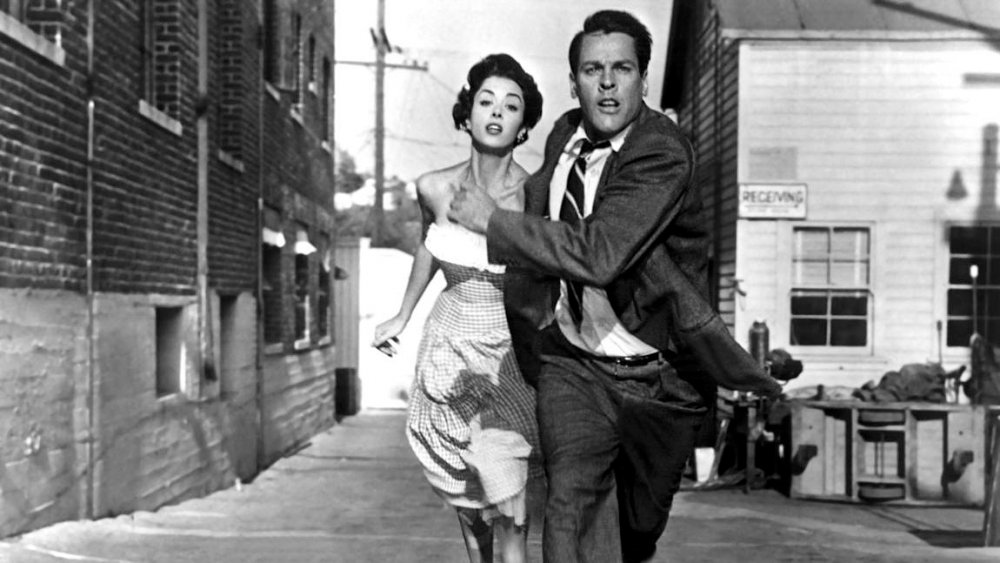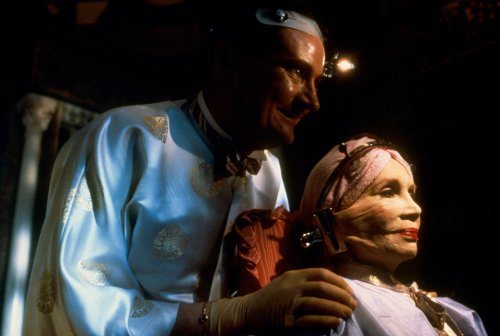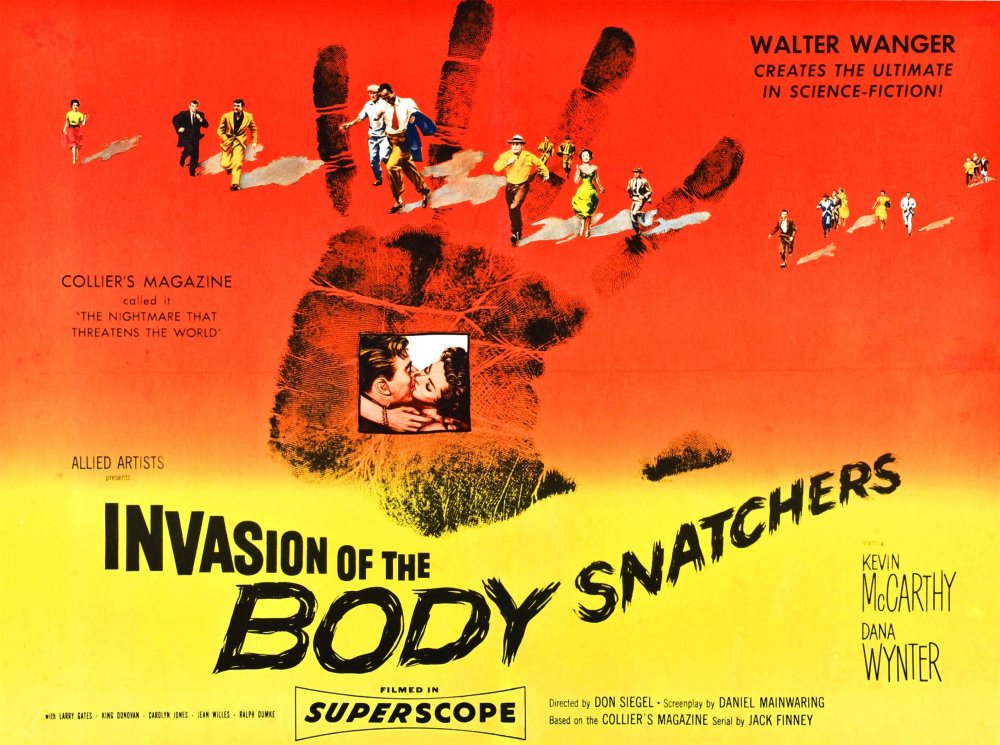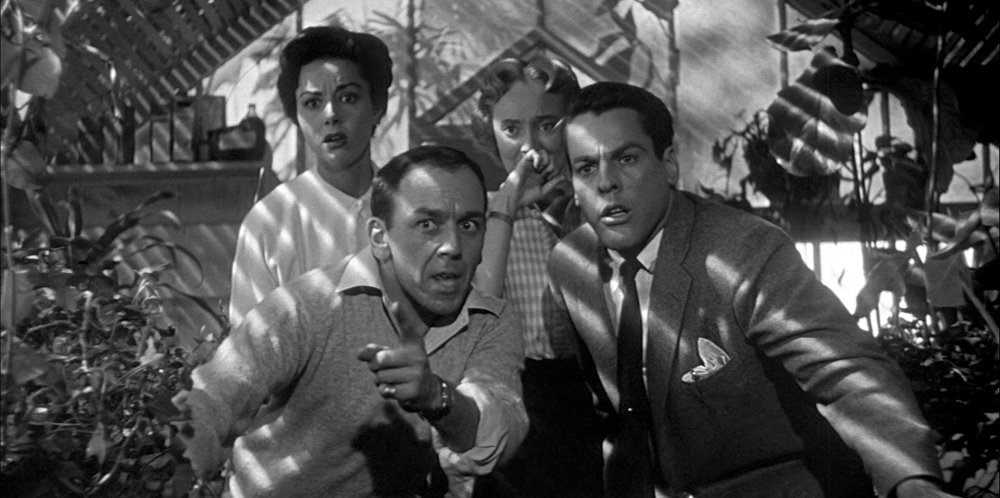
Invasion of the Body Snatchers (1956)
Invasion of the Body Snatchers is back in cinemas, including an extended run at BFI Southbank, from 31 October.
Sci-Fi: Days of Fear and Wonder is a major celebration of film and TV’s original blockbuster genre, from October to December 2014.
Days of Fear and Wonder: that’s the title chosen by the BFI for its blockbuster celebration of sci-fi, and it certainly pinpoints the emotions most filmmakers try to arouse in an audience when they work in that genre.
But there are exceptions. A couple of my all-time favourite sci-fi films – the in many ways very different Quatermass and the Pit (1967) and Friendship’s Death (1987) – impress mainly through the sheer intellectual brilliance their scripts display in weaving together a wide, rich range of ideas (scientific, historical, philosophical, political and anthropological) about what it means to be human.

Alphaville (1965)

Brazil (1985)

Gravity (2013)
Others I’ve liked primarily for their wit (Dark Star, 1974; Brazil, 1985), their emotional authenticity (Steven Soderbergh’s version of Solaris, 2002), or their resourceful inventiveness in creating an unfamiliar world from existing architecture (Alphaville, 1965; THX 1138, 1970). But even some of these work very effectively on the ‘fear and wonder’ level: Terry Gilliam’s dystopian gem has moments in it – not just the dreamscapes, but even the ‘smaller’, more intimate scenes – quite as extraordinary as the feted appearance of the mothership in Close Encounters of the Third Kind (1977) or the extraordinary evocation of life in space that distinguishes both 2001: A Space Odyssey (1968) and Gravity (2013).
You might have noticed that all the above titles – even the most wonder-packed – are still essentially ‘realist’ films, in that they more or less ask the question: how would ordinary human beings react if the following were to happen?
Most of them are situated on Earth or about astronautical missions rather than saving the world in some intergalactic war. I know I’m in a minority, but Star Trek and Star Wars are not really my cup of extraterrestrial tea; when sci-fi spirals off into fantasy, I’m generally less interested. That may well be a failing on my part, but I can live with it, especially when it comes to the ‘fear’ part of the equation: a plausible ‘realism’ makes certain films all the more suspenseful.
Take, for example, Don Siegel’s Invasion of the Body Snatchers (1956). The film was made at the height of cold war paranoia about the communists and the bomb, when sci-fi flourished with countless tales of alien invaders, mutants and misguided boffins. Indeed, Siegel’s film has been seen by some as an anti-communist allegory, while others have countered that its depiction of the suppression of non-conformism is an attack on the kind of thinking that gave rise to the ‘red scare’ witch-hunts led by Senator Joseph McCarthy and the House Un-American Activities Committee.

Invasion of the Body Snatchers (1956) poster
Maybe it doesn’t really matter too much which way you interpret Invasion of the Body Snatchers; all that finally counts is that the story suggests that humanity – by which I mean both the differentiated individual and, if things go very badly, the entire global population – is at serious risk.
Some of you might ask: “How is that realism?” Well, it’s a question of characterisation, milieu, tone. In the early scenes Siegel and his screenwriter Geoffrey Homes (the pen name of Daniel Mainwaring, who also wrote Out of the Past, The Big Steal and The Tall Target – interesting given the noir aspects of Body Snatchers) goes out of his way to stress the unremarkable ordinariness of his small-town setting. The perfectly rational doctor protagonist (Kevin McCarthy) even expresses the doubts we too would entertain when he’s visited by various patients claiming that their loved ones, despite all appearances to the contrary, are no longer their loved ones.
It takes a little while before the doc begins to suspect this is rather more than some sort of infectious delusional hysteria; and by then it’s too late. How would you feel if almost everyone you’ve known since you were a child started behaving slightly strangely – not much, perhaps, but enough for you to have the unsettling impression that they were no longer who they appeared to be?

Invasion of the Body Snatchers (1956)
The normal response to such an impression would be anxious confusion, a sense of total isolation, a profound fear that one was losing one’s grip both on one’s own identity and on ‘reality’ itself; the stuff, in other words, of a waking, inescapable nightmare.
Siegel’s film is nearly 60 years old now, but unlike some of its quaintly dated contemporaries, for the most part (ie with the exception of a few early moments of easily forgettable flirtatious banter) it feels extraordinarily modern and relevant.
The notion that we should all share the same aspirations and belief systems, the same thoughts and the same lack of empathy – that’s as terrifying today as it was when Siegel first called “Action!” to reveal how monstrous even those we’d always thought were just like us can be.
Watch the original trailer
Watch the original trailer for Invasion of the Body Snatchers (1956)




